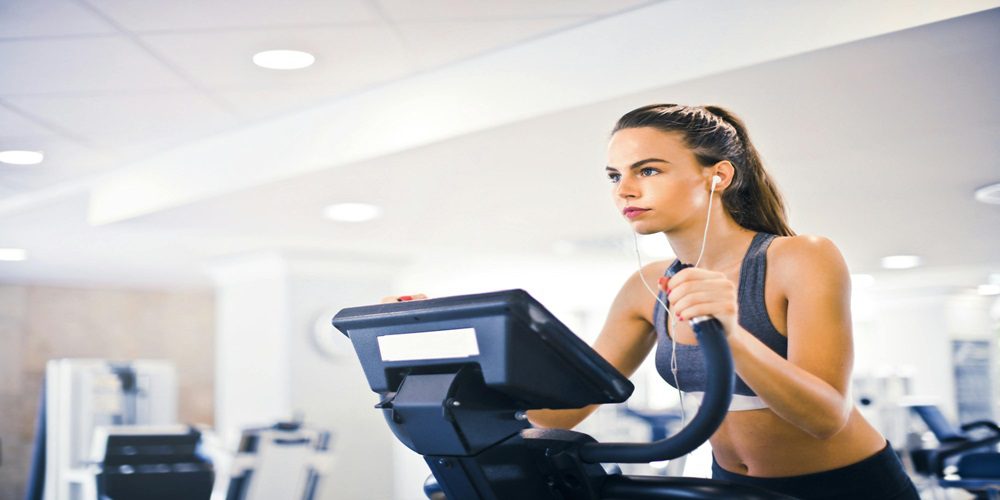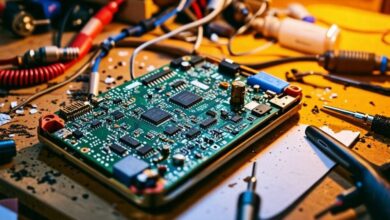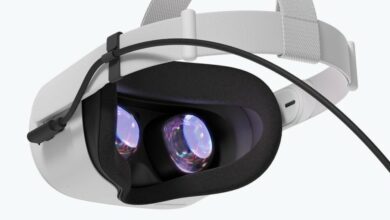From Fitness Trackers to Virtual Reality: How Technology is Paving the Way for a Healthier Future

In a world where technology is constantly evolving, it’s no surprise that it’s now revolutionizing the way we approach fitness and overall health. From sleek fitness trackers to immersive virtual reality experiences, these cutting-edge innovations are paving the way for a healthier future like never before. Join us as we explore how technology is transforming the way we stay active, motivated, and on track toward our wellness goals.
The Power of Technology in Promoting Health and Wellness
The advancement of technology has revolutionized the way we live, work, and communicate. But one aspect that often goes unnoticed is its impact on our health and wellness. From fitness trackers to virtual reality, technology has the power to promote healthier lifestyles and improve overall well-being.
In today’s fast-paced world where sedentary lifestyles and unhealthy habits have become the norm, it’s essential to leverage technology for promoting a healthier future. The use of technology in health has paved the way for innovative solutions that make it easier to monitor, track, and improve our physical and mental health.
One of the primary ways in which technology is promoting health is through fitness trackers. These devices are equipped with various sensors that can track our physical activities such as steps taken, distance traveled, calories burned, heart rate, sleep patterns, and more. They provide real-time feedback and motivation to stay active throughout the day.
Fitness trackers also come with accompanying apps that allow us to set goals, track progress over time, compete with friends or family members for added motivation, and even connect with healthcare professionals for personalized guidance. These devices have made it easier than ever before to take control of our physical health by providing valuable insights into our daily habits.
But it’s not just about physical health; technology is also making significant strides in promoting mental well-being. The rise of mental health apps such as meditation apps or therapy platforms is a testament to this fact. These apps offer resources for managing stress levels, improving sleep quality, boosting mood levels through mindfulness exercises or cognitive-behavioral therapy techniques – all at the convenience of a smartphone.
Fitness Trackers and Wearable Devices: How They Motivate and Monitor Our Physical Activity
Fitness trackers and wearable devices have become increasingly popular in recent years, and for good reason. These innovative tools offer a convenient and efficient way to monitor our physical activity, providing us with valuable insights into our daily habits and motivating us to live a healthier lifestyle.
One of the key ways that fitness trackers and wearable devices keep us motivated is through their use of goal setting and progress tracking features. These devices allow us to set specific goals for ourselves, such as a certain number of steps per day or a target distance to run. By tracking our progress towards these goals, we are constantly reminded of what we aim to achieve, which can help us stay on track with our fitness journey. Many devices also provide visual representations of our progress, such as graphs or charts, making it easier for us to see how far we have come.
Moreover, fitness trackers and wearable devices often include features that encourage competition and social interaction among users. Some may allow you to connect with friends or family who also use the same device, creating a sense of friendly competition as you attempt to outdo each other’s activity levels. Other devices may even have community groups or challenges where users can join forces with others who share similar fitness goals. This not only adds an element of fun to your workout routine but also provides a support system that can help keep you accountable in achieving your health objectives.
Aside from motivation, these devices are also equipped with advanced sensors that accurately track various aspects of our physical activity. From counting steps and monitoring heart rate to measuring sleep quality and calorie intake – they gather data that allows us to gain better insights into our overall level of physical health. By analyzing this information over time, we can identify patterns in behavior or areas where improvements can be made.
Additionally, many fitness trackers now offer coaching programs or personalized feedback based on the data collected from multiple sensors within the device. These tools provide tailored advice on how we can improve our performance or make healthier lifestyle choices. They can even remind us to stand up and move around when we have been inactive for too long, helping us avoid the negative effects of a sedentary lifestyle.
Virtual Reality in Healthcare: Revolutionizing Physical Therapy and Mental Well-being
Virtual reality (VR) technology has been making waves in various industries, from gaming and entertainment to education and training. However, one sector that is increasingly utilizing the power of VR is healthcare. In particular, VR is revolutionizing physical therapy and mental well-being by providing innovative solutions that enhance the overall patient experience while improving outcomes.
Physical therapy can often be a tedious and repetitive process for patients, but with VR technology, it becomes more engaging and immersive. Traditional exercises can now be transformed into interactive virtual environments where patients can manipulate objects or perform movements with their own avatar. This not only adds an element of fun to the therapy session but also helps to motivate patients to complete their exercises regularly.
One of the major advantages of using VR in physical therapy is its ability to simulate real-life situations in a safe and controlled environment. For example, balance training for patients with mobility impairments can be done through VR simulations that create challenging scenarios such as navigating through uneven terrain or crossing a virtual street filled with obstacles. This not only improves balance and coordination but also builds confidence in patients as they feel like they are able to overcome these challenges.
Moreover, VR technology allows therapists to track and analyze patient movements in real-time. This data can then be used to customize treatment plans according to each individual’s progress, ensuring more targeted therapy sessions. It also enables therapists to remotely monitor patient progress outside of clinic visits, which ultimately saves time and resources for both parties.
Beyond physical therapy, VR is also proving to be a valuable tool for mental health professionals in treating various conditions such as anxiety disorders, phobias, PTSD, and depression. With the help of immersive simulations and exposure therapies through VR headsets or 360-degree videos, patients can face their fears or anxieties gradually without feeling overwhelmed.
In addition, virtual reality provides a unique platform for mindfulness practices such as meditation or relaxation exercises. These experiences allow individuals to escape from their current environment and immerse themselves in a peaceful and soothing virtual world, promoting emotional well-being and stress reduction.
Mobile Apps and Online Platforms: Simplifying Nutrition Tracking and Meal Planning
One of the main benefits of using mobile apps for nutrition tracking is convenience. With busy schedules and hectic lifestyles, many people find it challenging to keep track of their meals and monitor their intake accurately. However, with just a few clicks on a smartphone or tablet, these apps can provide users with real-time information about their food consumption. This easy access to data enables individuals to make more informed decisions about their diets and ultimately lead healthier lives.
Another advantage of utilizing technology for nutrition tracking is the ability to set personalized goals and track progress over time. Many apps allow users to input information such as height, weight, and activity level to generate individualized calorie needs. Users can then set specific targets for macronutrient intake or overall calorie intake and track how well they are meeting those goals each day. Seeing progress towards these goals in real-time can be incredibly motivating for individuals looking to improve their eating habits.
Moreover, mobile apps offer a vast database of food items that can be easily searched by name or barcode scanning. This feature eliminates the guesswork when entering meals into the app manually. Users can also save frequently consumed foods as favorites for quick access in future meals.
Online platforms also play a significant role in simplifying meal planning by providing pre-made recipes or customizable meal plans tailored to an individual’s dietary preferences or restrictions. These platforms often include features such as grocery lists based on selected recipes, which take into account ingredients already present in one’s pantry, making shopping more efficient.
Additionally, some advanced mobile apps utilize artificial intelligence (AI) technology to learn an individual’s food preferences and create personalized meal suggestions based on their nutritional needs. These apps can also factor in factors like workout goals or weight loss targets to create tailored meal plans.
Gene Editing Technology: Potential Benefits for Preventative Healthcare
Gene editing technology, also known as genome editing, is a rapidly developing field that has the potential to revolutionize preventative healthcare. It involves using techniques like CRISPR-Cas9 to make precise and targeted changes to an individual’s genetic code. This tool has opened up a whole new world of possibilities in the medical field.
One of the main benefits of gene editing technology for preventative healthcare is its ability to prevent genetic diseases. With this technology, scientists are able to identify and correct mutations in genes that are responsible for various hereditary diseases such as cystic fibrosis, Huntington’s disease, and sickle cell anemia. By doing so, they can potentially eliminate the risk of these conditions being passed down to future generations.
In addition to preventing inherited diseases, gene editing technology also has the potential to prevent common chronic diseases such as diabetes and heart disease. Through identifying and modifying specific genes associated with these illnesses, researchers hope to develop effective preventive measures. This could greatly reduce the number of people suffering from these conditions and ultimately improve overall health outcomes.
Another significant benefit of gene editing technology for preventative healthcare is its use in personalized medicine. Each person’s genetic makeup is unique, which means that their response to medications may vary. With gene editing technology, doctors can now analyze an individual’s genetic profile and tailor treatments accordingly. This precision approach ensures that patients receive treatment plans best suited for their specific needs and avoids harmful side effects.
Furthermore, this cutting-edge technology has great potential in cancer prevention by targeting specific mutations within tumors’ DNA. Scientists hope this will lead towards more effective treatments with fewer side effects compared to traditional chemotherapy or radiation therapy methods.
Gene editing technology also offers solutions towards creating healthier food sources through genetically modified organisms (GMOs). These crops have been enhanced through gene editing techniques allowing them better resistance against pests or harsh environmental conditions ultimately leading to increased food production without relying on harmful pesticides or fertilizers.
However, with all the potential benefits of gene editing technology for preventative healthcare, ethical concerns have been raised. Some worry that this technology could be misused by creating “designer babies” or lead to discrimination against individuals based on their genetic makeup.
Smart Home Technology: Creating a Healthier Environment for Living
One key aspect of creating a healthier home through technology is air quality management. Indoor air pollution can have a significant impact on our health, especially for those who suffer from allergies or respiratory issues. Traditional heating and cooling systems often recirculate the same air throughout the house, which can lead to an increase in pollutants and allergens. With smart thermostats, not only can we control the temperature remotely but also monitor and filter out harmful particles in the air through integrated air purification systems.
Another significant area where smart home technology can make a difference is with water management. Water contamination is a growing concern globally, and traditional methods of water filtration may not be sufficient to remove all impurities. Smart faucets equipped with advanced filtration systems help minimize exposure to contaminants while providing clean drinking water straight from the tap.
Additionally, many fitness trackers now come equipped with sleep-tracking features that utilize sensors to monitor your sleep patterns and provide you with personalized insights into your sleeping habits. By analyzing factors such as heart rate variability, movement patterns, and even room temperature levels during sleep, these devices can make suggestions for improvement leading to better overall sleep quality.
Virtual reality (VR) technology has also been making strides in promoting good health by allowing individuals who are unable to participate in physical activities due to age or medical conditions access exercise programs virtually. VR platforms like Oculus Rift offer immersive experiences tailored towards rehabilitation exercises specific treatment needs that could otherwise be challenging or impossible at their physical state.
Smart home technology plays an essential role in creating healthier environments for living by promoting clean air and water, improving sleep quality, and increasing accessibility to physical activities. As technology continues to advance, it is safe to say that the future of living healthier lies in the hands of smart home technology.
Artificial Intelligence in Healthcare: Improving Patient Care and
Artificial intelligence (AI) has made its way into almost every industry, and healthcare is no exception. The use of AI in healthcare has the potential to greatly improve patient care and revolutionize the way that medical professionals approach treatment. From diagnosing diseases to predicting the development of illnesses, AI technology is paving the way for a healthier future.
One of the main benefits of using AI in healthcare is its ability to analyze vast amounts of data quickly and accurately. This allows for faster and more accurate diagnoses, reducing the chances of misdiagnosis or delayed treatment. With AI systems like IBM Watson Health, doctors can input a patient’s symptoms, medical history, and test results to receive a list of possible diagnoses ranked by probability. This not only saves time but also helps doctors make more informed decisions about treatment options.
In addition to diagnosis, AI technology can also aid in early detection and prevention of diseases. Through machine learning algorithms, AI can analyze patterns in large datasets to identify risk factors for certain diseases such as cancer or heart disease. By identifying these risk factors early on, medical professionals can implement preventive measures before any symptoms even appear.
Furthermore, with advancements in natural language processing (NLP), AI can now analyze electronic health records (EHRs) and extract valuable insights that would have previously gone unnoticed. This could include identifying drug interactions or potential adverse reactions based on a patient’s history or even recommending personalized treatment plans based on genetic predispositions.
Another area where AI is making a significant impact in healthcare is through telemedicine services. With virtual consultations becoming increasingly popular due to the pandemic, patients are able to seek medical advice without having to physically go into a clinic or hospital. This not only reduces waiting times but also decreases the risk of spreading infectious diseases.
Additionally, virtual reality (VR) technology is being used to enhance patient care experiences by providing immersive therapies for anxiety disorders and rehabilitation programs for physical injuries. VR simulations have also been used to train medical students and surgeons, allowing them to practice procedures in a controlled virtual environment.
Conclusion
As technology continues to advance, we can see its powerful impact on the health and wellness industry. From fitness trackers to virtual reality, technology has provided us with innovative tools that are paving the way towards a healthier future. These advancements not only make it easier for individuals to track their fitness goals but also provide access to personalized workouts and resources that were once out of reach. As we continue to embrace these technologies, let us strive towards achieving a healthier society for all.





